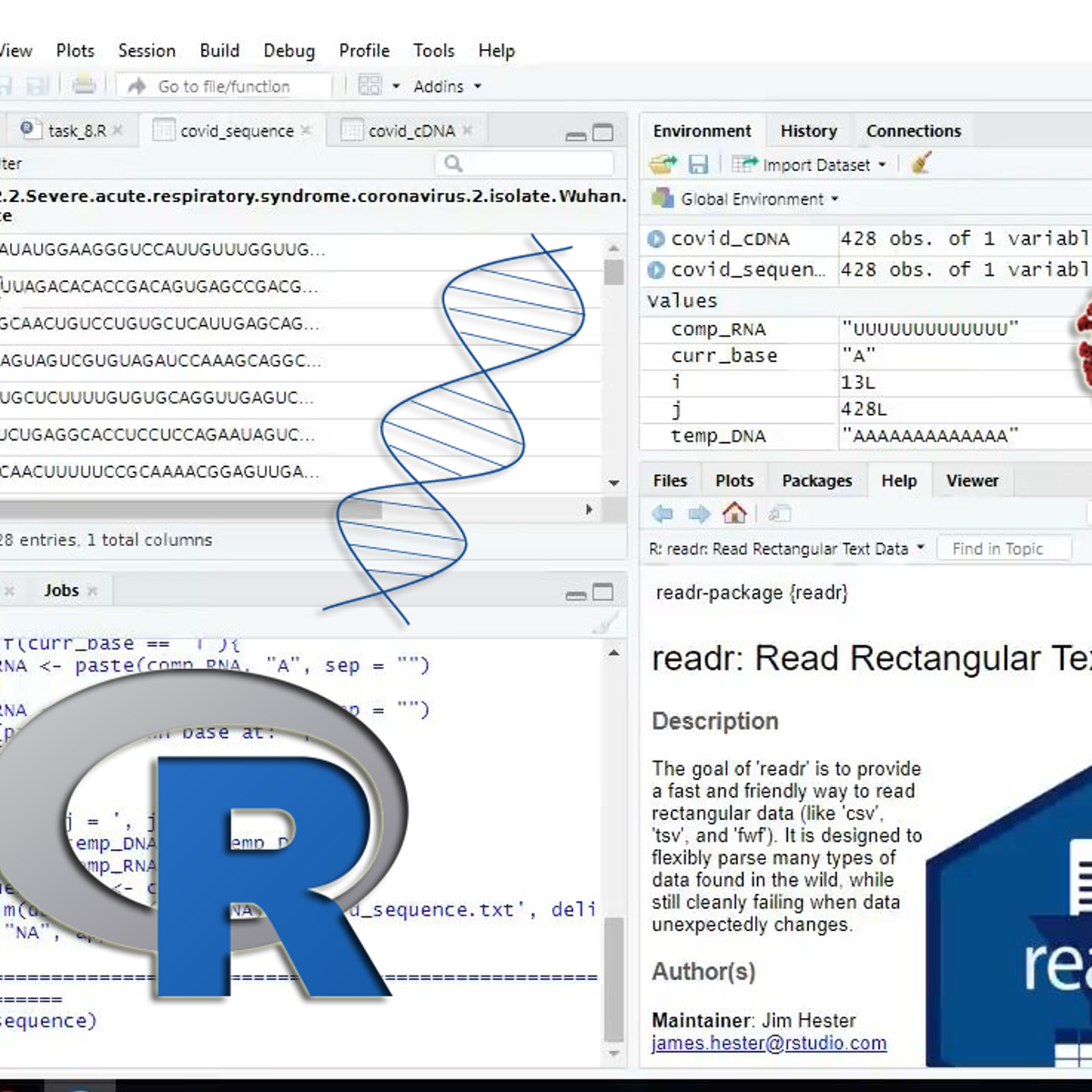
في هذه الدورة التدريبية القائمة على المشروع والتي تستغرق ساعة واحدة ، ستتعلم اللبنات الأساسية في لغة R وكيفية تطوير برنامج R الذي يبني متواليات الحمض النووي (DNA ، RNA) العكسية والمكملة والعكسية-المكملة. أيضًا، ستجعل برنامجك يقرأ ملفًا يحتوي على تسلسل DNA وتتعامل مع أحد الجينومات الكاملة لفيروس كورونا.
What's inside
Syllabus
Good to know
Save this course
Activities
اجمع مواد الدورة وقم بملاحظات عليها
Show steps
ستساعدك عملية جمع المواد الدراسية في الحفاظ على تنظيمك ودوافعك طوال فترة الدورة.
Show steps
-
قم بتنزيل مواد الدورة
-
قم بعمل ملاحظات أثناء المحاضرات والمواد
-
قم بتنظيم ملاحظاتك في مجلد أو دفتر ملاحظات
شارك في مجموعات دراسية مع زملائك
Show steps
ستوفر لك المشاركة في مجموعات الدراسية فرصة لمناقشة المفاهيم مع الآخرين وتلقي الملاحظات.
Show steps
-
انضم إلى مجموعة دراسية
-
شارك في مناقشات المجموعة
-
اطلب المساعدة من زملائك عند الحاجة
تطوع في مشروع بحثي يتعلق بتحليل تسلسل الحمض النووي
Show steps
سيمنحك التطوع في مشروع بحثي خبرة عملية في مجال تحليل تسلسل الحمض النووي.
Show steps
-
ابحث عن مشاريع بحثية تتطوع فيها
-
اتصل بمحقق المشروع
-
تقديم المساعدة في جمع أو تحليل البيانات
One other activity
Expand to see all activities and additional details
Show all four activities
حضر ورشة عمل حول تحليل تسلسل الحمض النووي
Show steps
ستوفر لك ورشة العمل فرصة لتعلم مهارات جديدة وتوسيع معرفتك حول تحليل تسلسل الحمض النووي.
Show steps
-
ابحث عن ورش عمل حول تحليل تسلسل الحمض النووي
-
سجل في ورشة العمل
-
حضور ورشة العمل
اجمع مواد الدورة وقم بملاحظات عليها
Show steps
ستساعدك عملية جمع المواد الدراسية في الحفاظ على تنظيمك ودوافعك طوال فترة الدورة.
Show steps
- قم بتنزيل مواد الدورة
- قم بعمل ملاحظات أثناء المحاضرات والمواد
- قم بتنظيم ملاحظاتك في مجلد أو دفتر ملاحظات
شارك في مجموعات دراسية مع زملائك
Show steps
ستوفر لك المشاركة في مجموعات الدراسية فرصة لمناقشة المفاهيم مع الآخرين وتلقي الملاحظات.
Show steps
- انضم إلى مجموعة دراسية
- شارك في مناقشات المجموعة
- اطلب المساعدة من زملائك عند الحاجة
تطوع في مشروع بحثي يتعلق بتحليل تسلسل الحمض النووي
Show steps
سيمنحك التطوع في مشروع بحثي خبرة عملية في مجال تحليل تسلسل الحمض النووي.
Show steps
- ابحث عن مشاريع بحثية تتطوع فيها
- اتصل بمحقق المشروع
- تقديم المساعدة في جمع أو تحليل البيانات
حضر ورشة عمل حول تحليل تسلسل الحمض النووي
Show steps
ستوفر لك ورشة العمل فرصة لتعلم مهارات جديدة وتوسيع معرفتك حول تحليل تسلسل الحمض النووي.
Show steps
- ابحث عن ورش عمل حول تحليل تسلسل الحمض النووي
- سجل في ورشة العمل
- حضور ورشة العمل
Career center
Biostatistician
Computational Biologist
Bioinformatician
Genetic Counselor
Research Scientist
Data Analyst
Software Engineer
Quality Assurance Analyst
Medical Writer
Science Teacher
Technical Writer
Project Manager
Business Analyst
Market Researcher
Financial Analyst
Reading list
Share
Similar courses
OpenCourser helps millions of learners each year. People visit us to learn workspace skills, ace their exams, and nurture their curiosity.
Our extensive catalog contains over 50,000 courses and twice as many books. Browse by search, by topic, or even by career interests. We'll match you to the right resources quickly.
Find this site helpful? Tell a friend about us.
We're supported by our community of learners. When you purchase or subscribe to courses and programs or purchase books, we may earn a commission from our partners.
Your purchases help us maintain our catalog and keep our servers humming without ads.
Thank you for supporting OpenCourser.



